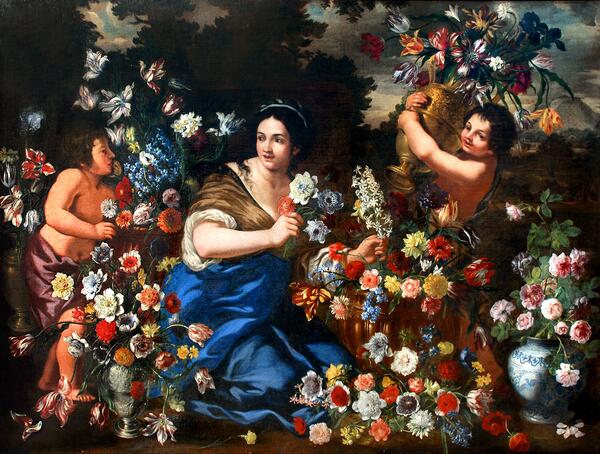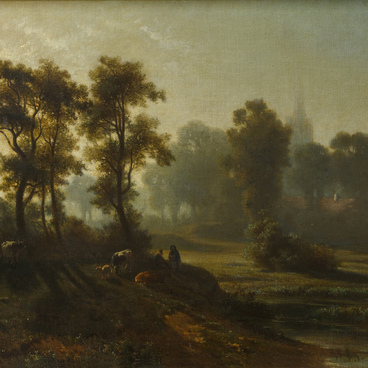The 17th century was the heyday of flower and fruit painting. While still lifes in the genre of “laid table” were popular in Holland of the time, Flanders became the center of floral still life. The favorable warm climate contributed to the popularity of gardening and the cultivation of indoor flowers. At that time, the science of botany was undergoing a period of rapid development.
Daniel Seghers was born into the family of a wealthy silk merchant in 1590 in Antwerp, the artistic center of Flanders. He began studying painting in Utrecht, where he moved with his widowed mother. When Daniel was about 20 years old, he returned to Antwerp, where he was enrolled in the Guild of St. Luke as a student of Jan Brueghel the Velvet — one of the founders of the genre known as “blompot”, or “flower pot”. In 1614, Seghers became a novice of the Jesuit Order.
Today, Seghers’ name is known for his images of flowers. He succeeded Jan Brueghel the Elder (or the Velvet, Flower Brueghel), a leading artist of floral still lifes. Jan Brueghel painted flowers masterfully. He was able to convey all the charm of their shape, brightness, and combination of colors. Alexandre Benois once said,
Daniel Seghers was born into the family of a wealthy silk merchant in 1590 in Antwerp, the artistic center of Flanders. He began studying painting in Utrecht, where he moved with his widowed mother. When Daniel was about 20 years old, he returned to Antwerp, where he was enrolled in the Guild of St. Luke as a student of Jan Brueghel the Velvet — one of the founders of the genre known as “blompot”, or “flower pot”. In 1614, Seghers became a novice of the Jesuit Order.
Today, Seghers’ name is known for his images of flowers. He succeeded Jan Brueghel the Elder (or the Velvet, Flower Brueghel), a leading artist of floral still lifes. Jan Brueghel painted flowers masterfully. He was able to convey all the charm of their shape, brightness, and combination of colors. Alexandre Benois once said,



